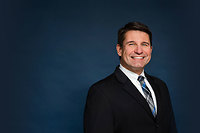The Supreme Court of Ohio recently clarified the scope of the tort of spoliation,[1] which requires five elements under Ohio law:
(1) pending or probable litigation involving the plaintiff, (2) knowledge on the part of defendant that litigation exists or is probable, (3) willful destruction of evidence by defendant designed to disrupt the plaintiff’s case, (4) disruption of the plaintiff’s case, and (5) damages proximately caused by the defendant’s acts
In Elliott-Thomas v. Smith, the Court accepted a certified conflict related to the third element:
Does the tort of intentional interference with or destruction of evidence include claims alleging interference with or concealment of evidence that disrupt a plaintiff’s underlying case? Or, is the tort of intentional interference with or destruction of evidence limited to claims that allege evidence is physically altered or destroyed?
2018-Ohio-1783, ¶ 1.
The spoliation issues arose during Plaintiff-Appellee Kristen Elliott-Thomas’s underlying wrongful termination claims against the Warren City School District and members of its board of education. While discovery was ongoing, plaintiff filed a separate spoliation lawsuit against the school district and its counsel based primarily on delayed production of documents in discovery. Plaintiff claimed that relevant evidence was improperly withheld, and the school district and its attorneys therefore “interfered with” and “concealed” documents sufficient to establish an independent claim of spoliation. Although the documents at issue were eventually produced, Plaintiff refused to address the issue via traditional mechanisms and instead maintained her spoliation case.
Reminger attorneys Martin Galvin and Jonathan Krol undertook the defense of the school board’s counsel in the spoliation lawsuit. In response the allegations, Reminger argued that, as a matter of Ohio law, spoliation claims require physical destruction of evidence—not simply a delayed production of information in discovery.
The trial court agreed and granted summary judgment in favor of the defendants. The trial court determined that the allegations of concealment or interference amounted to mere discovery disputes in the wrongful-termination case.
On appeal, the Eleventh District reversed, finding:
[A]n allegation of actual destruction or alteration of physical evidence is not required . . . to assert a viable [spoliation] claim. Instead, the intentional concealment, interference with, or misrepresentation of evidence is sufficient to establish a viable cause of action if the other elements . . . are satisfied. . . . The trial court erroneously held that an allegation of physical destruction or alteration of physical evidence is a prerequisite to establish a viable [spoliation] cause of action.
Elliott-Thomas v. Smith, 2017-Ohio-702, 79 N.E.3d 606, ¶ 35 (11th Dist.). The Eleventh District acknowledged that its holding was at odds with sister courts throughout the state, and it certified the conflict for review by the Supreme Court.
In addressing the certified question, the Supreme Court noted that “Ohio is among only a handful of jurisdictions that recognize the independent tort of intentional spoliation of evidence,” and that most states have specifically declined to recognize the cause of action. Elliott-Thomas, 2018-Ohio-1783, ¶¶ 10, 15 (collecting cases). It then analyzed the history and evolution of the tort of spoliation and its requisite elements.
Ultimately, the Supreme Court held that “allegations of intentional interference with or concealment of evidence are not actionable under the independent tort of intentional spoliation of evidence.” Id. at ¶ 19.
In support of its rationale to refrain from expanding the tort of spoliation, the court noted:
- There are other adequate remedies to deter and punish interference with and concealment of evidence by parties and counsel, including broad sanctions under the rules of procedure, and disciplinary sanctions if counsel violate ethical obligations;
- The harm or damages arising from the tort of spoliation are inherently speculative; and
- Expanding the tort would undermine judicial economy considerations and place undue burdens on courts and juries.
Id. at ¶¶ 16-18.
Justice Fischer authored a concurring opinion, joined by Justice O’Donnell, to reiterate the court’s belief that the rules of procedure and the rules of professional conduct provide adequate remedies to deter and address concealment of or interference with evidence during litigation. However—leaving the door open to further inquiry—he noted that the court did not take a position as to whether there is a sufficient remedy available where concealment of evidence is not discoverable until after the underlying litigation has concluded.
This Elliott-Thomas decision is an important victory that prevents parties from using spoliation claims to address issues that are, in essence, discovery disputes. Without this protection, over-zealous litigants could use spoliation claims for leverage in an underlying case and to drive a wedge between opposing counsel and their clients.
If you have any questions regarding Elliott-Thomas v. Smith, or if you wish a copy of this opinion or otherwise have a question regarding spoliation or lawyer liability issues, please feel free to call any one of our Legal Professional Liability Group Members.
_________________________________________________________
[1] The spoliation tort should not be confused with the missing evidence doctrine, which is akin to an evidentiary rule, or, more precisely, a method of indirect proof (i.e., a type of circumstantial evidence). Spoliation is a cause of action, while “missing evidence” is a principle that governs how and when a party may request the jury to make an inference about evidence that is no longer available.
This has been prepared for informational purposes only. It does not contain legal advice or legal opinion and should not be relied upon for individual situations. Nothing herein creates an attorney-client relationship between the Reader and Reminger. The information in this document is subject to change and the Reader should not rely on the statements in this document without first consulting legal counsel.
THIS IS AN ADVERTISEMENT





